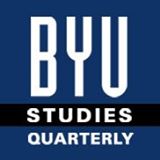BYU Studies Quarterly

Article Title
“By Study and Also by Faith”
Keywords
BYU Studies, Brigham Young University, learning
Abstract
At their inception, universities were places where all branches of learning—both the sacred and the secular—were studied. At the great medieval universities, for instance, faith and academic excellence were intertwined,1 and this strong connection continued in the universities of the New World. Most American research universities began as religiously affiliated colleges whose missions were to develop Christian character and foster faith in order to prepare men for the ministry or work in the government.2 But, beginning in the late nineteenth century and continuing over the course of the twentieth century, the vast majority of these research universities abandoned their religious affiliations to emphasize solely academic excellence.3 By the early twenty-first century, only nine research universities in the United States claimed a religious affiliation out of the 207 classified as “high research activity” or “very high research activity” universities using the Carnegie Classification.4 Brigham Young University was one of these nine institutions.5
Recommended Citation
Daines III, J Gordon
(2020)
"“By Study and Also by Faith”,"
BYU Studies Quarterly: Vol. 59:
Iss.
1, Article 7.
Available at:
https://scholarsarchive.byu.edu/byusq/vol59/iss1/7
